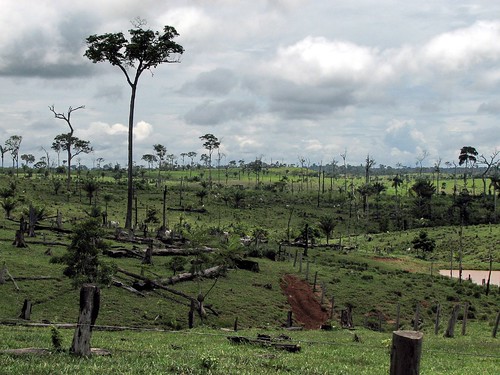AMAZON DEFORESTATION DROPS BUT NEW THREATS TO THE FOREST RISE

In Brazil, "deforestation" is defined as the total clearing of primary forest, usually to create pasture or cropland. It's significantly worse than what is known as clear-cutting in North America because the forest is never replanted. The Brazilian government repeatedly boasts that the rate of total forest removal has been declining across the last several years. But this tells only part of the story because logging, small-scale clearing and fires continue and these impacts (which are significant and substantial) are called "forest degradation." Comparing the month of September of 2009 with 2010, the rate of deforestation fell 22% but "forest degradation" increased 213%. In recent months, nearly 85% of the increased forest damage occurred in Mato Grosso State which is the hotbed of industrial-scale beef and soy production and is particularly sensitive to fluctuations in the global economy. As the market demand recovers, the forests fall.
And more ominous threats are looming. The legislature in Mato Grosso has voted to strip the protections of ecological zoning and the "ruralista" bloc in the National Congress have launched an initiative to substantially weaken the national Forest Code and grant amnesty to those who have been fined for previous acts of illegal deforestation.
Deforestation falls, but rainforest damage surges in Brazil in September
mongabay.com
November 06, 2010
Despite the worst drought on record in the region, deforestation in the Brazilian Amazon during September fell by 20 percent relative to September 2009, reports Imazon, a research institute that provides monthly updates on forest clearing.
Imazon's satellite-based tracking system found accumulated deforestation during from August 2010 to September 2010 totaled 380 square km, down 22 percent from the 489 sq km cleared from August 2009 to September 2009.
But not all the news was good. Imazon found a sharp increase in forest degradation, which usually arises from logging and fires. Degradation is often a precursor to outright deforestation.
Imazon estimates degradation for August 2010 and September 2010 at 2,055 sq km, a 213 percent increase from the same period last year when forest degradation totaled 657 sq km. 85 percent of degradation in recent months occurred in the state of Mato Grosso, which accounts for much of the Amazon's beef and soy production.
The Amazon is in the midst of the worst drought in recorded history, with dried up rivers isolating communities and stranding boats. Meanwhile fires have cast a pall over much of southern Brazil, Bolivia, Paraguay, and parts of Argentina.
The drought is consistent with climate models that predict drier conditions as the tropical Atlantic warms.






No comments:
Post a Comment